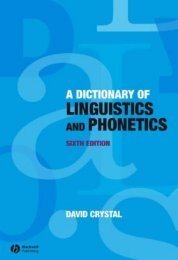url?sa=t&source=web&cd=3&ved=0CC0QFjAC&url=http://www.teachingenglish.org.uk/sites/teacheng/files/B369-Young-Learners-Activity-Book_v10
url?sa=t&source=web&cd=3&ved=0CC0QFjAC&url=http://www.teachingenglish.org.uk/sites/teacheng/files/B369-Young-Learners-Activity-Book_v10
url?sa=t&source=web&cd=3&ved=0CC0QFjAC&url=http://www.teachingenglish.org.uk/sites/teacheng/files/B369-Young-Learners-Activity-Book_v10
You also want an ePaper? Increase the reach of your titles
YUMPU automatically turns print PDFs into web optimized ePapers that Google loves.
TeachingEnglish <strong>Young</strong> <strong>Learners</strong> <strong>Activity</strong> <strong>Book</strong><br />
Activities<br />
<strong>Activity</strong> 25: My seasons’ book<br />
Ludmilla Koval – Ukraine<br />
Age: 7–9<br />
30 – 40 minutes once a season over a year Large classes? Yes Mixed level? Yes<br />
Materials: A blank booklet of ten pages for each child (five A3 pieces folded and stapled is ideal).<br />
Coloured pens /crayons /pencils /glue, items from nature (such as leaves), any other materials to<br />
decorate (for example, glitter).<br />
Organisation: Whole class.<br />
Aim: To practise vocabulary and writing, particularly creative writing.<br />
Description: The children prepare booklets about the four seasons.<br />
Preparation: No preparation is needed for this activity.<br />
Procedure<br />
1. In the first lesson of ‘My Seasons <strong>Book</strong>’, ask the children to write the title on the front cover<br />
and to put their name on. They can decorate it as they wish.<br />
2. In the second lesson, write the name of the season you are experiencing on the board,<br />
for example, AUTUMN. Create a mind-map of all the things the children associate with<br />
this season in your country. If they do not know the English word, provide a translation.<br />
Here is an example:<br />
cold<br />
gold and brown leaves<br />
fireworks<br />
Autumn<br />
toffee apples<br />
October<br />
bonfires<br />
November<br />
long nights<br />
3. The children then write Autumn in the centre of their second page and they can either copy<br />
what is on the board, or they can write their own words around the season (for example, they<br />
could write the months that are in autumn). The children then decorate the page, for example,<br />
with dry leaves.<br />
4. For the next page, prepare a poem, a song or a story about autumn. Again, you can either<br />
do this as a class activity, building up the text on the board that children then copy into<br />
their books, or the children can write their own story or poem, or choose one of their own.<br />
56<br />
© British Council 2012





